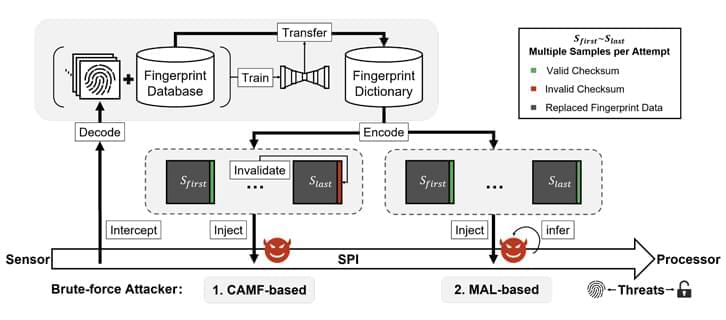BrutePrint: A new attack technique targeting smartphone fingerprint authentication.
New York City is sinking under the weight of its massive buildings, leaving it more vulnerable to rising seas, a new study finds.
Most coastal cities are slowly sinking as the earth beneath them settles and groundwater is drained away. In some metropolises, the weight of large, concrete-and-steel skyscrapers may be hastening this slump, but experts rarely, if ever, account for the mass of large buildings in projections of future sinking.
For the new study, scientists tallied the weight of every building in New York, which they put at 842 million tons, and estimated the downward force of these structures across the city. They found that buildings are leaving a bigger imprint in areas rich in clay than in areas where sand or bedrock predominate.
Octopus mothers slam themselves against rocks and eat their own arms before their eggs hatch. Scientists have discovered what leads to the self-destruction.
Once a person is dead, their body usually starts to decay immediately, although a good embalming job can delay decay.
In a recent study published in the Open Forum Infectious Diseases, researchers assess the resistance of uropathogenic Escherichia coli (UPEC) over time in adults who received uncomplicated urinary tract infections (uUTIs) outpatient care.
Study: Multi-drug resistance of Escherichia coli from outpatient uncomplicated urinary tract infections in a large U.S. integrated health care organization. Image Credit: 220 Selfmade studio / Shutterstock.com.
Please make sure your browser supports JavaScript and cookies and that you are not blocking them from loading. For more information you can review our Terms of Service and Cookie Policy.
“For instance, in Japan, a battery tanker can carry power from regions with high renewable energy supply potential, such as Kyushu and Hokkaido, to high-demand areas of Honshu or for inter-island power transmission,” the company explained.
While electric propulsion vessels might be the future to decarbonize the shipping industry, there appears to be a need to haul stored renewable power to other grids worldwide via a new tanker class.
Age-related hearing loss impacts one in three adults between the ages of 64 and 75 in the US, and around half of these numbers are down to genes.
The extra kicker, though, is that because hearing involves a complex genetic toolkit, it also makes this kind of hearing loss incredibly difficult to treat.
A team of researchers has for the first time targeted age-related genetic hearing loss in a much older cohort of mice, which had a mutation of the human transmembrane serine protease 3 (TMPRSS3) gene that results in autosomal recessive deafness 8/10 (DFNB8/DFNB10).
If rising oceans aren’t worry enough, add this to the risks New York City faces: The metropolis is slowly sinking under the weight of its skyscrapers, homes, asphalt and humanity itself.
New research estimates the city’s landmass is sinking at an average rate of 1 to 2 millimeters per year, something referred to as “subsidence.”
That natural process happens everywhere as ground is compressed, but the study published this month in the journal Earth’s Future sought to estimate how the massive weight of the city itself is hurrying things along.
A new genetics study of ant “social parasites” shows how complex sets of features can emerge rapidly and potentially split species.









